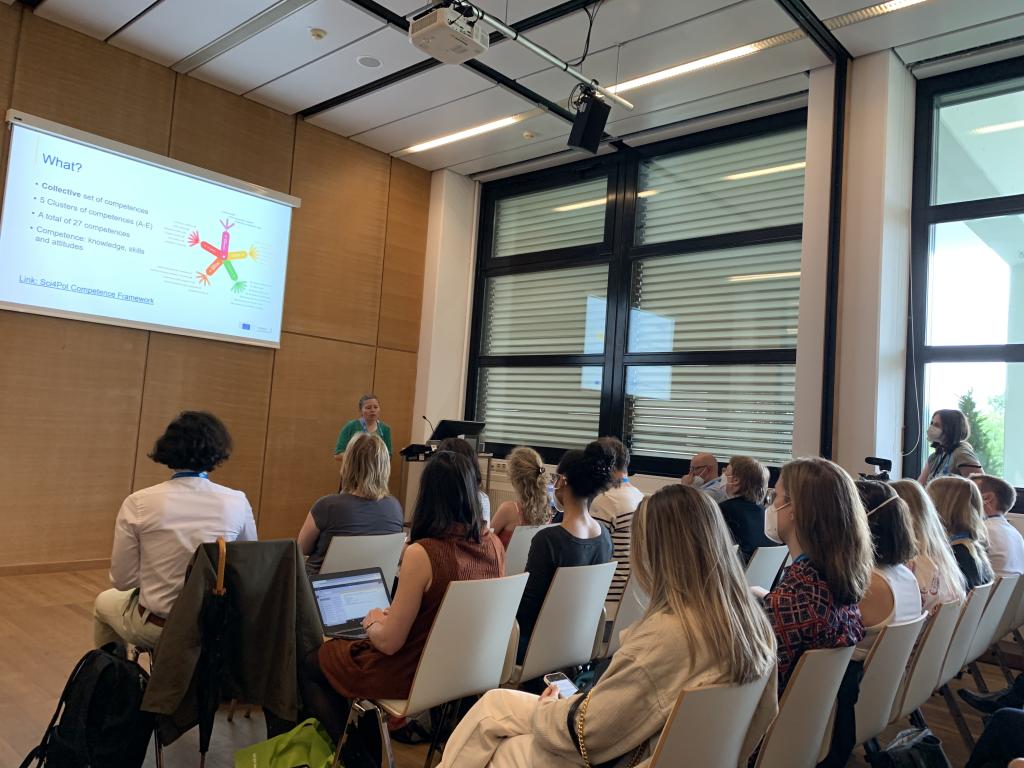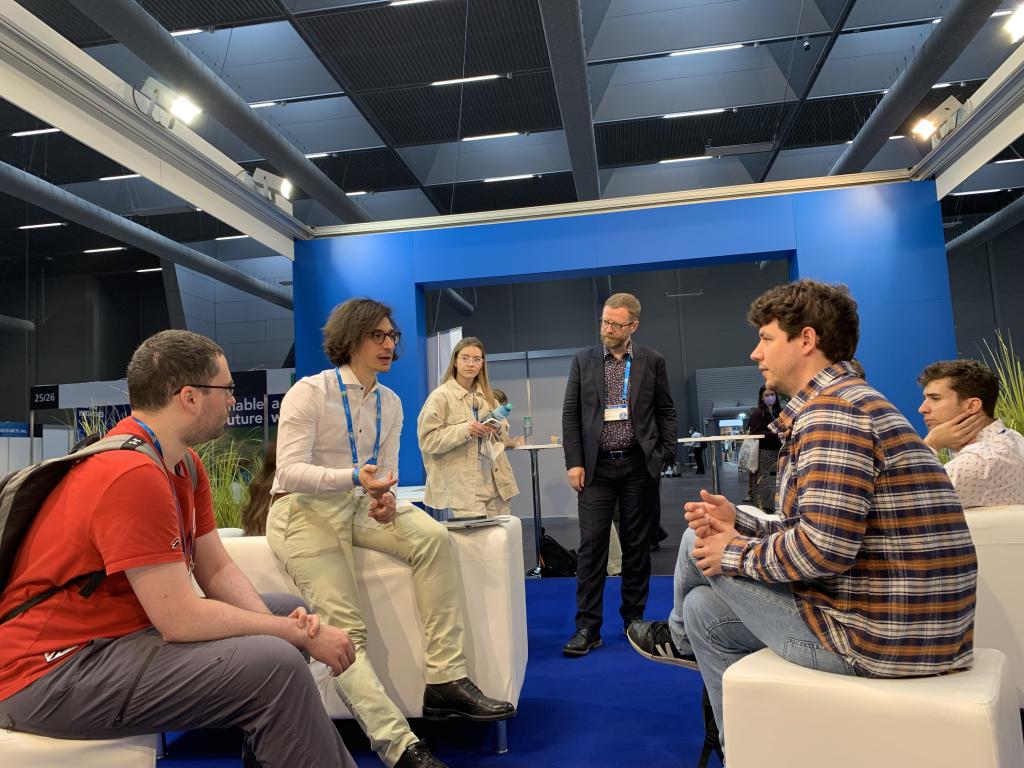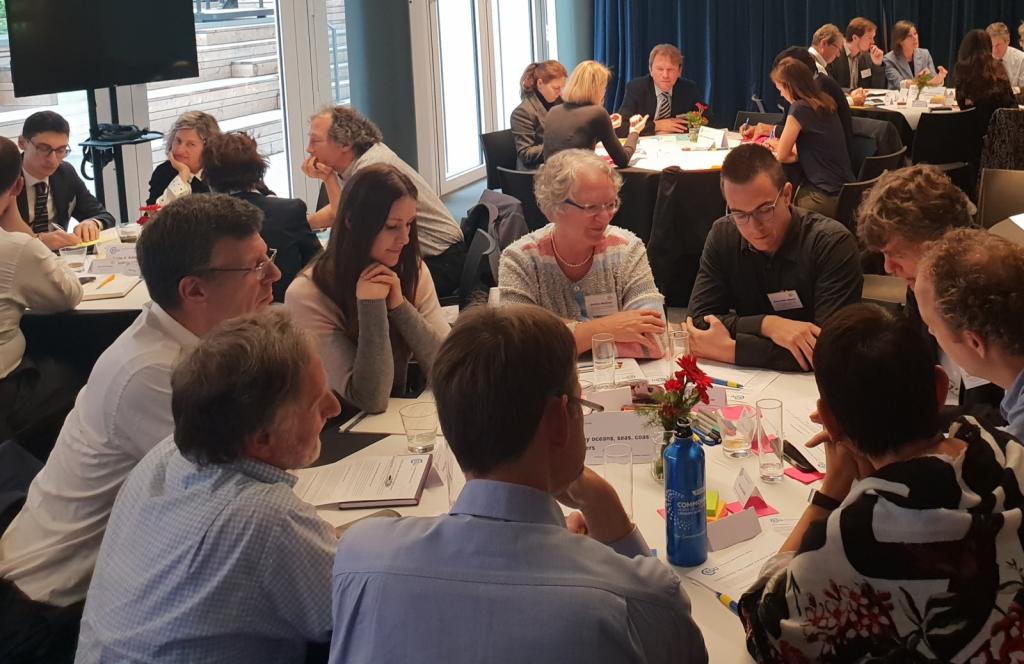Science is a key component of the policymaking process as it allows decision-makers to consider the evidence and potential consequences of any action or inaction. This is particularly important in the context of the growing complexity of societal challenges and the policies needed to deal with them.
Scientific institutions can play a vital role in both communicating the best available scientific information to policymakers and helping their individual members to engage. As someone who has worked with the European Geosciences Union on these tasks for the last 5 years, I've thought a lot about how exactly we - and other scientific institutions - can contribute. Knowing exactly how we can engage and where our efforts are most valuable is an ongoing challenge. While I certainly don't have all the answers, there are a few overarching areas that I’ve focused on and where I think more engagement is needed.
1. Empower individual scientific members with information and resources
Scientific institutions have the potential to share information about the policymaking process, how to effectively engage with it, and upcoming opportunities with many individual scientists. They can also help scientists understand how science for policy is different from academic science and encourage them to develop skillsthat will enable them to more effectively engage with the policymaking process.
If your institution doesn't currently have the knowledge or capacity to deliver this information internally, you may consider inviting an external expert to present it. These experts can introduce your scientific community to science for policy concepts and provide them with resources to learn more! Experts can be invited to present information during a scientific conference, webinar, or even via a blog post. The recent Environmental History Meets Public Policy webinar series is a great example of this.

2. Create spaces for a two-way dialogue
One of the challenges of integrating science into the policymaking process is overcoming the differences between the two communities and aligning goals, expectations, and needs. Creating and facilitating activities that bring scientists and policymakers together can help to bridge this gap and promote more consistent interaction and productive cooperation. Interactive events are a great method of engaging those working in a specific area or on a policy challenge that requires scientific input. While the standard high-level panel session can help scientists and policymakers understand what each other is working on, an interactive event that involves audience participation facilitates greater networking and can even increase the overall outcome of the event.

3. Support scientific advisory mechanisms
Having strong institutionalised methods of integrating science into the policymaking process is something that benefits everyone. It helps policymakers to use the best available scientific evidence and create evidence-informed policies while also allowing scientists to understand when and how their expertise can be used.
The European Commission has developed numerous scientific advice mechanisms and processes over the last few years. The Scientific Advice Mechanism was created in 2015 and integrates science into Europe’s decision-making process through a Group of Chief Scientific Advisors who work closely with experts from SAPEA, a coalition of academies and societies from all scientific fields. As the European Commission's science and knowledge service, the Joint Research Centre (JRC) also supports the integration of scientific evidence into the policymaking process by providing independent scientific advice to where it is needed. Its Knowledge4Policy platform also provides relevant and scientifically robust knowledge, a database of interconnected knowledge to inform policy, and an online community that allows scientists, policymakers, and those working on the interface to connect.
Scientific institutions can support these mechanisms and increase their uptake by educating their members about them and sharing opportunities about how they can get involved. Furthermore, while these processes have undoubtedly improved the transfer of information from scientists and policymakers, there is always room for improvement! Feedback from scientific organisations can help to identify ongoing challenges or areas that could be built on. While individual scientists could provide this feedback, institutions often have a better overview of their scientific community's needs and greater capacity to understand the systems in place.
4. Facilitate or contribute to a “Boundary Organisation”
I was first introduced to the term “Boundary Organisation” while reading the JRC’s Science for Policy Handbook in 2020. Boundary Organisations sit at the intersection of science and policy, supporting evidence-informed policymaking by connecting relevant experts and the best available scientific advice to where it is most needed through consistent interactions and a co-creative process. It’s not an easy task, but these organisations are becoming more important with the increasing complexity of policy issues and amount of data available. Boundary Organisations have the potential to support science for policy processes by creating a coalition of scientists who are experts on a particular policy area or issue and connecting them with a relevant policy unit or ministry. Supporting the process to ensure both groups understand each other and can work effectively is also key.
5. Build stronger and more diverse scientific communities
Of course, we should want to build stronger and more diverse scientific communities for numerous reasons. Being able to provide more effective scientific advice and support evidence-informed policymaking is one of them. Strong and diverse scientific communities enable scientists who are working on a particular policy issue to draw from a wider pool of knowledge than they would have to access otherwise. This enables them to see a bigger picture, incorporate a diverse range of relevant information and ideas, reduce duplication, and find areas of consensus. All of this ideally leads to greater strategic alignment, increased efficiency, and a higher quality of work.
One of the most time-consuming aspects of science for policy is keeping up to date on policy news and upcoming legislation so that scientists know what and when to contribute. Working within a community of scientists enables a division of labour so that this information can be found and shared in less time. These communities do, however, take time to foster and grow. It’s important to be strategic and outline the group’s common goals and likely areas of collaboration. It’s also a good idea to establish some procedures and create a user-friendly digital environment to exchange knowledge.

The road ahead
Of course, finding the time and resources to understand the policy ecosystem, engage with it, and share useful information with your members is an ongoing challenge. If employing someone who is dedicated to these tasks isn’t within reach, perhaps your organisation would consider creating a ‘science for policy’ working group or contributing to the working group of another organisation. The JRC’s new Knowledge4Policy Platform is a great place to create a profile, connect with others working on the science-policy interface, and to find opportunities to engage with them. My profile is linked in case you have any questions about this blog or want to get in touch!
Share this page


Login (or register) to follow this conversation, and get a Public Profile to add a comment (see Help).
08 Jul 2022 | 14 Jul 2022